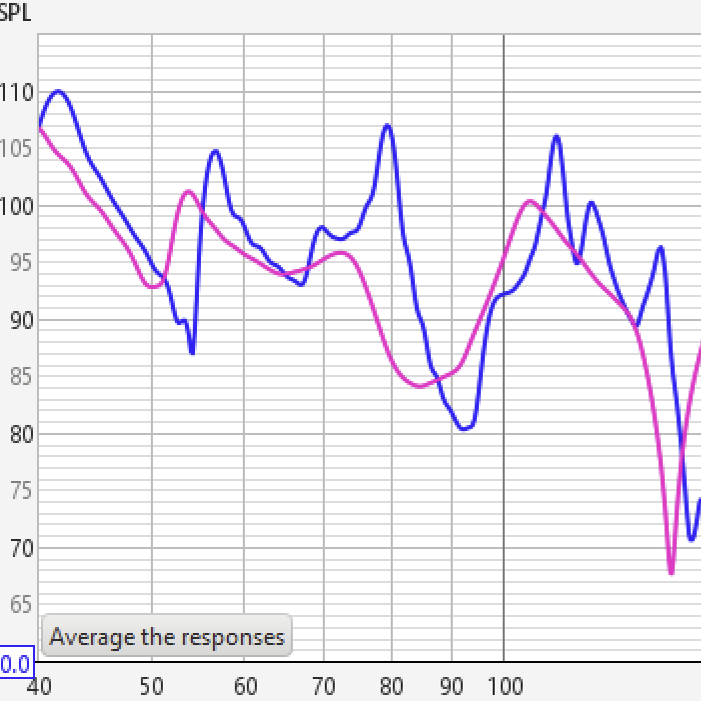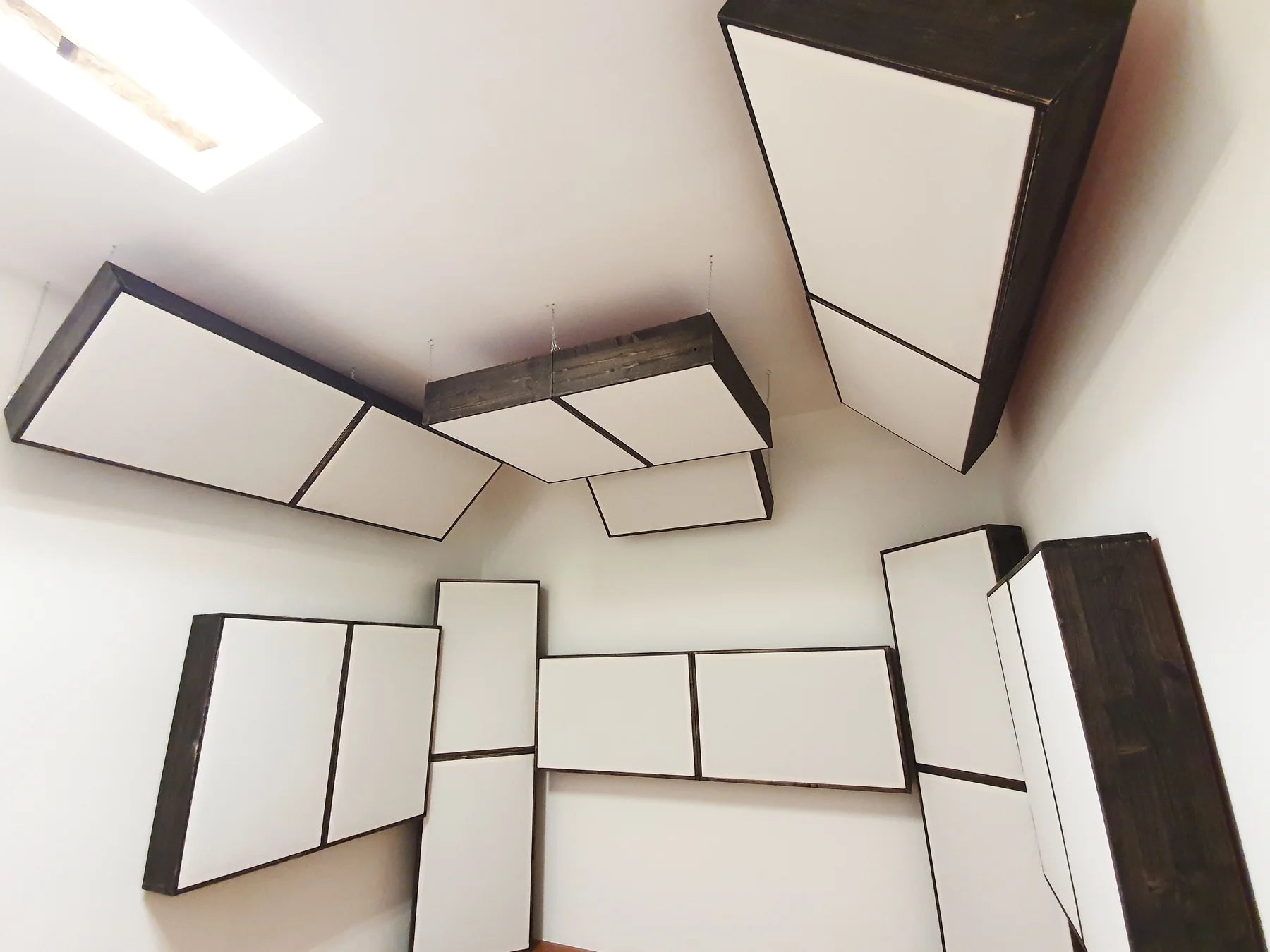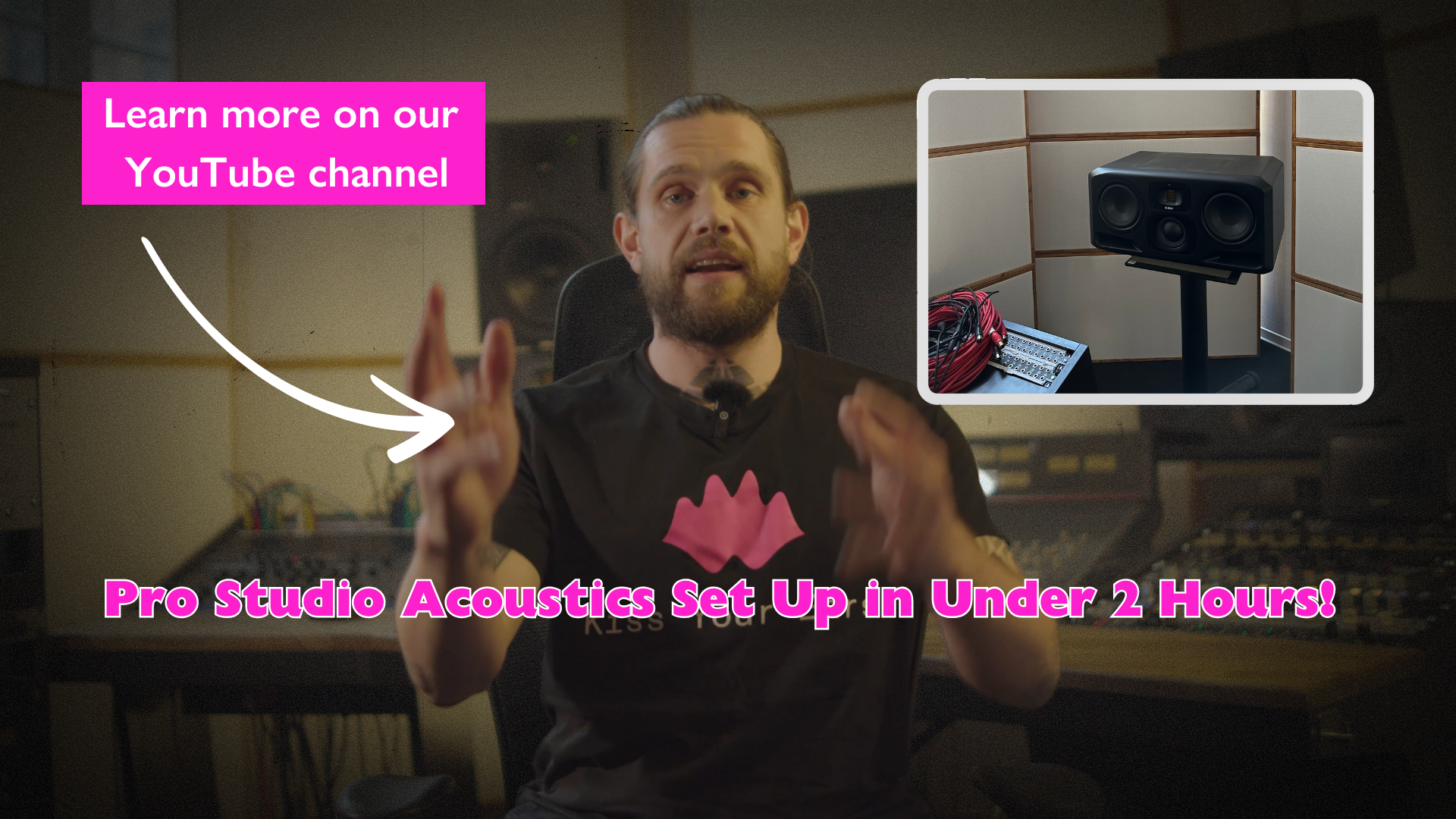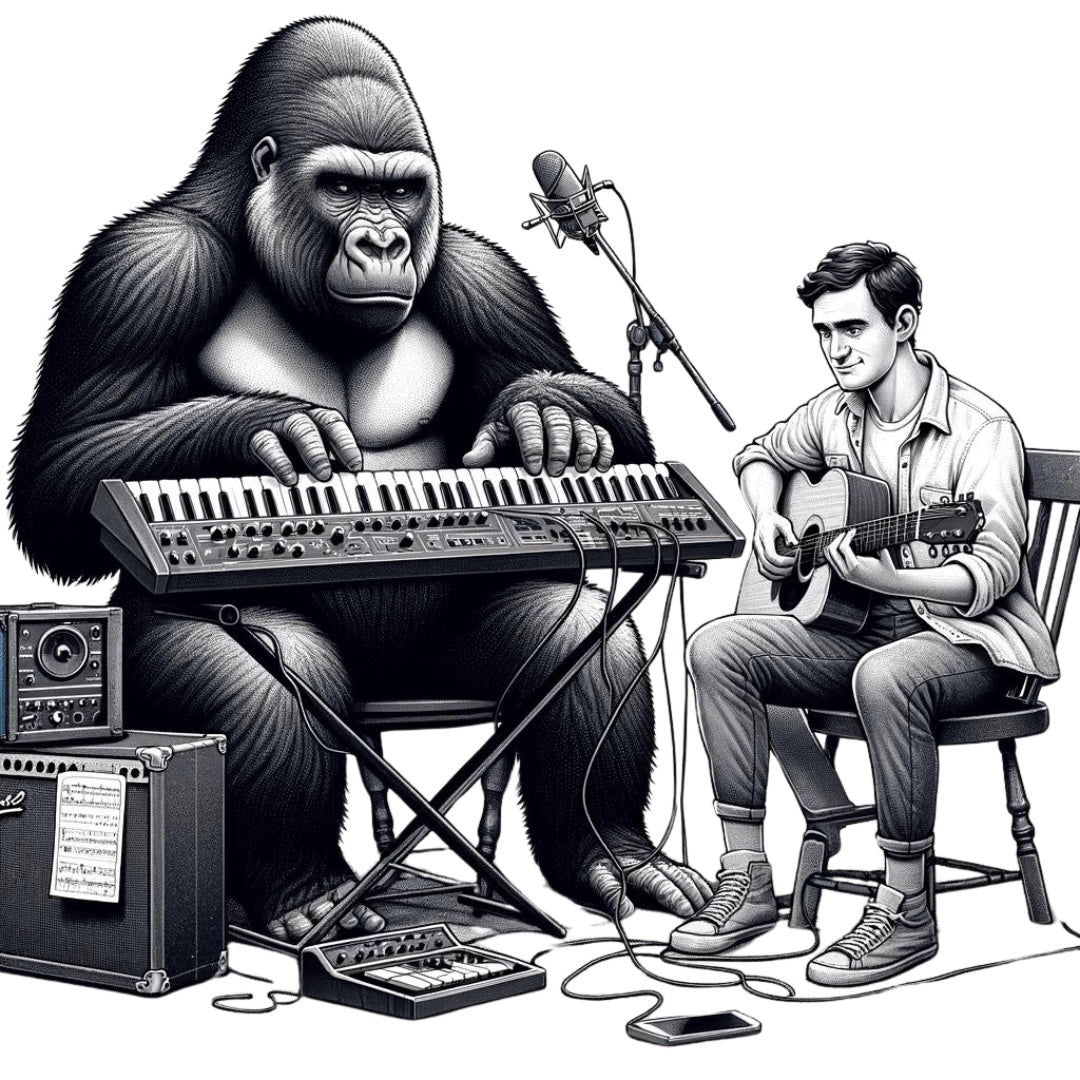How Many Bass Traps Do I Need? Easy Version.
A simplified, proven guide to perfecting your studio’s low end response.
You’ve just finished a mix that sounds perfect in your studio, but when you play it on other systems, the bass falls apart - either booming uncontrollably or disappearing entirely. The issue isn’t with your mix or your gear. It’s with your room’s low-frequency response.
Low frequencies resonate within your room, creating standing waves. These distort your mix, preventing accurate sound reproduction.
Without proper control over those low frequencies, you might as well be mixing in a wind tunnel. Whatever you are working on will not translate properly to other systems.

How many bass traps does it take to transform your room from a bass nightmare to a professional mixing environment?
It’s tempting to think a few traps will do the job, but here’s what we’ve found works best in real-world studios like yours. The reality is this: low frequencies are stubborn and powerful. Unlike mid and high frequencies, which are easy to absorb with less massive means, bass hangs around causing havoc.
Here’s the kicker: Low frequencies are omnidirectional. They build up in ways you can’t predict without a full understanding of how sound works in your room. To tackle these rogue waves, you need optimised bass traps - and a lot of them. The good news is that this is by far the most impactful investment in your listening chain.

Let’s Get Down to Numbers (Without Making Your Head Spin)
The distribution of bass energy in a room is complex, and the effectiveness of treatment scales with the amount of well designed absorptive material you introduce. Based on our experience, a basic guideline is to aim for at least 1 unit of optimised velocity bass trap like the King Kong Series per square metre of floor space, with 1.2 units per m² providing better results, and 1.5 units per m² being a real sweet spot. We even suggest 1.7 to 2.0 units per m2 for comprehensive low-frequency management before turning to another solution aka. Pressure bass traps.
Here’s a super simple guide for how many bass traps you need for a good production studio, based on room size:
- Small studios (up to 10m²): You’ll need 12-15 bass traps to make a good production suite. Forget the idea that a couple of traps in the corners will fix your problems. At this size, standing waves dominate every square metre, so let King Kong take care of it.
- Medium studios (15-20m²): You’re looking at 18-25+ bass traps. The goal is to control the bass across as many of the key positions in the room (listed below) as possible. You’re going to have to focus on a more thorough coverage if you want pro-level clarity.
- Large studios (30m² and above): For bigger rooms, you’ll need at least 30 or more bass traps for minimum KISS YOUR EARS quality bass control. Sure, you would absolutely rather have 10 than 0, but we are aiming for the minimum amount to make a good production studio, by industry standards.
The more traps you add, the better your room will sound, and the more accurately you will get to hear what you are working on. And don’t worry about your space feeling “dead.” Properly treated rooms still sound lively - just with tight, punchy bass. Plus dramatically reduced reverb time across the frequency spectrum. Reduced flutter echo, comb filtering and phasing issues. Even improved stereo imaging and a wide “sweet spot”. Perhaps the coolest thing is that we feel closer in connection to the music, it feels more vibrotactile.
Every trap you add reduces the build-up of sound energy, specifically those pesky standing waves that make your mixes sound thin, boomy, or inconsistent, as well as solving all kinds of other acoustic problems in doing so.

It may seem like a lot but when you consider the following positions that you can cover to achieve a balanced sound. Aka. synergistically diminished resonances on every room dimension should be the goal - achieve this by hitting as many of these locations as possible:
Dihedral corners:
- Wall-to-wall vertical corners
- Wall-to-ceiling horizontal corners

- Wall-to-floor horizontal corners

Trihedral corners:
- Wall-to-wall-to-ceiling corners
- Wall-to-wall-to-floor corners
Early reflection points:
- Side walls
{Pic of side walls stacked H - ex machina?}
- Ceiling
- Rear wall
- Front wall behind speakers

Why Does This Matter?
Let’s be clear: untreated bass issues destroy your mix. The standard home producer may have monitors that produce down to 40 Hz let's say, and most club systems cut off around there. We’re talking about 40Hz to 400 Hz resonating uncontrollably, and effectively causing all kinds of chaos in their harmonic counterparts up the entire frequency spectrum. It’s not just an inconvenience, it’s a catastrophe for your mix. Imagine listening to what you think is the perfect mix in your studio, only to take it to your car or another system, perhaps a friend’s studio, and realise the bass is totally off.
That’s why proper bass traps are non-negotiable. They don’t just “improve” the sound - they give you control over the sound.
The Power of Scaling Your Room Treatment
Now, I get it - not everyone’s got the budget to treat their entire room right away. That’s fine. You don’t need to drop a fortune all at once. But here’s what you can’t do: skimp on bass trapping and hope for the best. With our modular approach, you can start with the key problem areas and add more traps over time.
Think mass. The more mass you bring into the volume of space with bass traps, the more control you get over those low frequencies. The more you spread out and try to cover all dimensions of corners, the more generalised your improvement will be. Start small if you must, but plan to scale up. The beauty of Kiss Your Ears King Kong Bass Traps is that they’re designed to also be added incrementally if needed. Every unit you add is a step closer to the pro-level control you need to stay sharp in this competitive industry.

The Real-World Payoff: Speed and Accuracy
Here’s what most people miss: proper acoustic treatment doesn’t just make you sound better - it makes you work faster. Our customers report mixdowns happening in one third of the time once their rooms are properly treated. Think about that for a second. Less second-guessing, less tweaking, less checking on different systems. When you can trust your room, you can focus on what really matters: the music.
Our traps don’t just fix your room’s acoustic issues - they fix your workflow. Imagine being able to crank out mixes at three times the speed because you’re not fighting your room. That’s what proper bass control gives you: listening confidence and speed.

Bottom Line
So, how many bass traps do you really need? The answer: As many as it takes to get your room under control. Stop thinking small and start treating your studio like the professional environment it deserves to be. Whether you’ve got a home studio or a full-sized commercial space, a proper set of low reaching bass traps are the most important investment you can make in your sound and your workflow. And remember, you don’t have to break the bank. Start with what you can afford, but don’t stop until you’ve got it right.
Ready to take control of your sound? Start with our King Kong Bass Traps and experience the transformation first hand. Your mixes - and your clients - will thank you.











Leave a comment
All comments are moderated before being published.
This site is protected by hCaptcha and the hCaptcha Privacy Policy and Terms of Service apply.